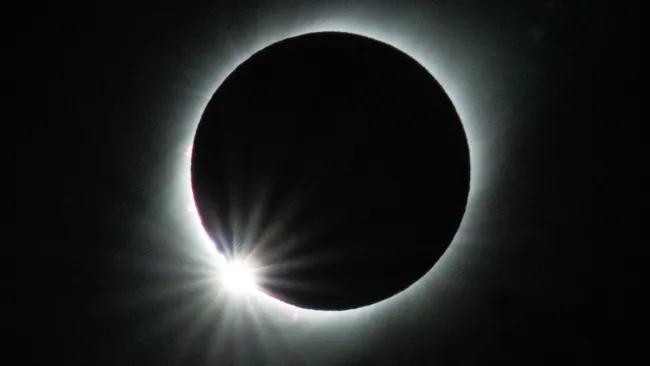Solar Eclipse: In the realm of elysian marvels, many events allure humanity’s imagination like a solar decline. As we prepare for the eagerly anticipated total solar decline on April 8, 2024, which will blazon the skies of North America, it’s natural to wonder about the longest solar declines in history and what the future holds for similar witching cosmic displays.
Solar Eclipse: April 2024 Total Eclipse
The forthcoming April 2024 decline promises an admiration- inspiring spectacle, with its maximum summation of 4 minutes and 28 seconds. While this duration is emotional, it pales in comparison to the record- holder. The longest total solar decline on record passed on June 15, 743 B.C., boasting a stunning summation of 7 minutes and 28 seconds. This literal phenomenon unfolded over the Indian Ocean, off the seacoast of Kenya and Somalia.
Still, in the realm of astronomical possibilities, indeed lesser declines are theoretically doable. According to computations by decline calculator Jean Meeus, the maximum implicit summation attainable on Earth stands at 7 minutes and 31 seconds. This zenith of decline duration is attainable within 5 degrees north of the ambit in July, when the sun reaches aphelion, its furthest point from Earth, and the moon reaches perigee, its closest point to Earth.
While no similar extraordinary decline has been proved in recent glories, the future holds tantalizing prospects. Looking ahead to July 16, 2186, astronomers prognosticate an decline that could compete the record, with a summation lasting 7 minutes and 29 seconds. This remarkable event will cut the Atlantic Ocean off the seacoast of French Guiana, offering a celestial spectacle of unprecedented duration.
The 2186 decline is a product of Saros 139, a family of solar declines known for their periodicity and life. This particular Saros cycle generates declines every 18 times, 11 days, and 8 hours, climaxing in rare cases of exceptional duration, similar as the one anticipated in 2186.
Also, technological invention has enabled humanity to extend the experience of summation beyond natural limits. In a remarkable feat of imagination, scientists aboard the Concorde 001 achieved an unknown extension of summation during the June 30, 1973 decline. Flying at Mach 2 over Niger, they dragged summation on the ground from 7 minutes and 4 seconds to an astounding 74 minutes, showcasing the eventuality for mortal intervention in elysian marvels.
Looking beyond the April 2024 decline, several notable events are on the astronomical horizon. declines of significant duration are read for August 2, 2027, August 12, 2045, and August 24, 2063, each immolation unique openings for elysian suckers to witness the majesty of summation.
To sum up, even though the complete solar decline in April 2024 is expected to provide North America with an amazing show, it is only a warm-up to the cosmic marvels that will make astronomical history. The grand harmony of the macrocosm is symbolized by the allure of solar declines, which arouses wonder and seduction in everything from fossil records to fetuses.
